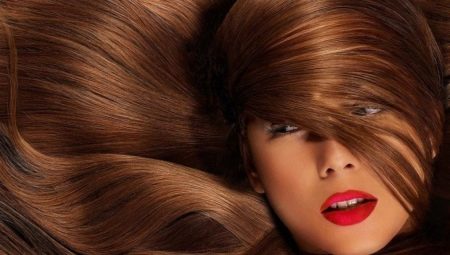Almost every girl or woman has a desire to change herself sooner or later, and the first thing they change in themselves is their hair color. Changing the image is a responsible task. Each girl distrusts cardinal changes, as she is afraid to spoil this head of hair by her nature, and yet “hair is not teeth - it will grow back”. Since the assortment is large, you should decide on the choice of dye. To prevent possible negative consequences, it is worth taking the choice more responsibly. Each has already faced the fact that after painting the color does not match the display on the package. Many do not know, but you can pick up the tone, easily relying on its marking, shown in front or behind the box.

What are the numbers on the paint for?
The range of coloring products is so great that every girl or woman has a difficult choice. The benchmark falls on some factors: this is the brand, price and appearance of the product itself. Never draw hasty conclusions based on the words of acquaintances or especially outsiders, because each person and his skin are individual: what came up or came up (as in our case with paint) alone is not a fact that will suit you either.
After the choice of the manufacturer has been made, you should choose a shade. In the selection process, most consider the girl’s photo on the package or the provided palette with tufts of hair, then read the name of the tone and try to understand it. But no one is interested in finely printed numbers, and they will be able to provide more unmistakable information about the desired shade.
Tones are indicated by a series of numbers. It can be either one or several digits.
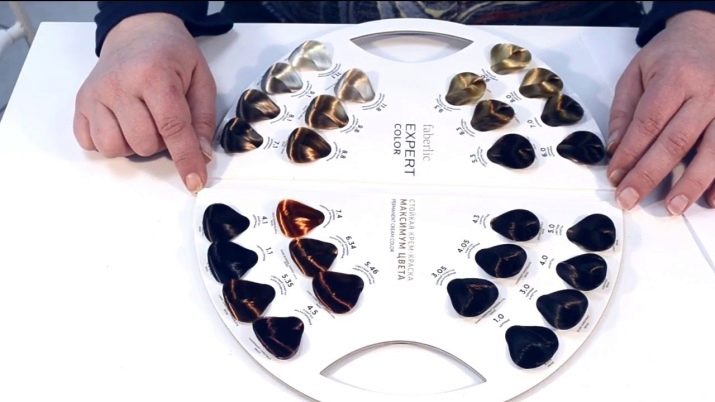
What do they mean?
The first digit is responsible for the naturalness and degree of penetration.
The transnational scale of natural tones will help in decoding:
- 1 - black color;
- 2 - deep dark chestnut;
- 3 - ordinary dark chestnut;
- 4 - chestnut;
- 5 - light chestnut;
- 6 - dark blond;
- 7 - light brown;
- 8 - light blond;
- 9 - blond;
- 10 - blonde blond.
Tones 11 and 12 indicate a deeper lightening (very light and platinum).
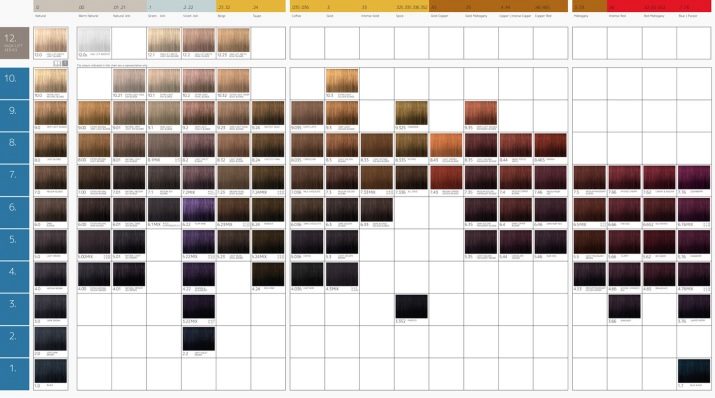
A tone that has one number in the marking refers to the natural color. But most often they are used as part of the designation of dominant and secondary shades (third and second digits, respectively).
The second figure is responsible for the secondary shade, it has seven positions. They are decrypted as follows:
- 0 - a number of natural shades;
- 1 - purple pigment with blue, related to the ash row;
- 2 - the presence of a greenish tone - to the matte row;
- 3 - a combination of yellowish-orange pigment - to a golden palette;
- 4 - a combination of copper (reddish yellow) - to the red row;
- 5 - a combination of reddish-violet - to the mahogany palette (reddish tint with light bluish tints);
- 6 - a combination of bluish-violet - to the violet row;
- 7 - a combination of reddish brown - a natural base (Havana - rich dark brown color).
Additional pigment most often refers to the main in a proportion of 1/2. There are also other ratios (e.g. 1/3). Decoding of the third digit:
- 1 - smoky (ash) shade;
- 2 - purple;
- 3 - gold;
- 4 - copper;
- 5 - mahogany;
- 6 - red;
- 7 - chocolate (coffee).
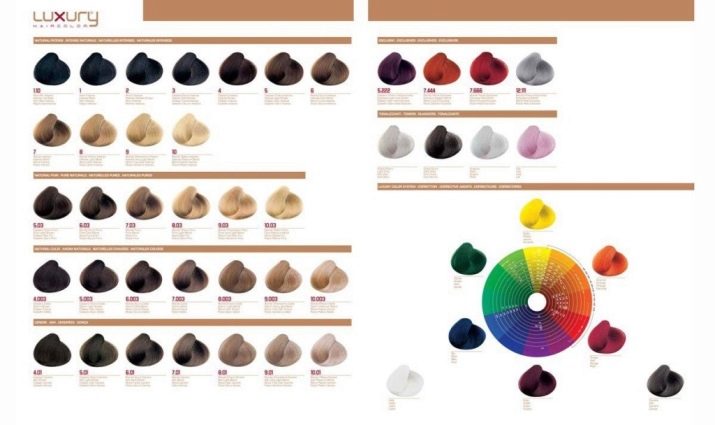
Some manufacturers use letters (Pallet paint) as a symbol (the color penetration depth is marked with numbers):
- letter C ash tone is indicated;
- PL - a shade of platinum;
- A - super lightening;
- N - natural gamma;
- E - beige color;
- M - matte structure;
- W - brown (chestnut) color;
- R - red tide;
- G - golden color;
- K - copper;
- I - intense or enhanced color;
- F, v - purple.
Marking only with the first or first and second digits excludes the presence of various shades, that is, the tone of the painting agent is exclusively natural.
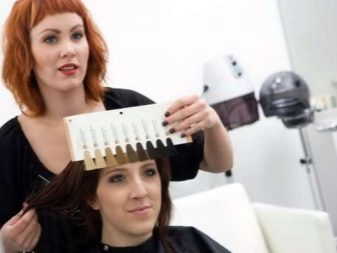
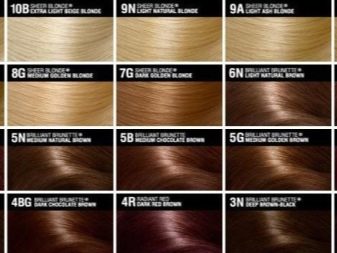
You can also find out the degree of resistance indicated on the back of the package. There are four of them: from zero to third.
The zero digit is used to indicate the paint with the lowest degree of resistance, it is called "temporary paint with a short-term result." This category includes mousses, sprays, unstable cream paints and other products.
The number one is responsible for products that do not contain chemicals in the composition. They will give shine and renew the coloring of your hair. The second will tell about the semi-stability of the coloring agent, the composition directly includes peroxide and ammonia. The chemical resistance of such a cosmetic product is approximately three months. The third corresponds to a more resistant paint of all the above.
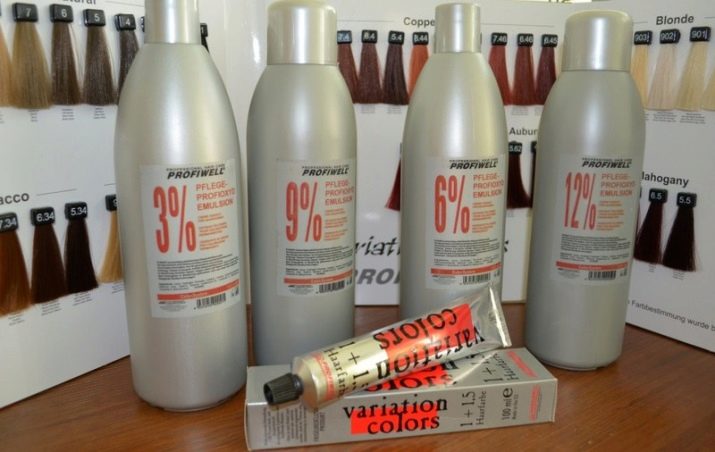
The value of the digits after the dot
There are a lot of designations and deciphers. Some of them are worth considering:
- one zero after point (for example, "7.0") - the presence of a natural or warm pigment;
- multiple zeros (for example, "6.001") indicates a greater naturalness in the shade;
- if one or more digits follow after zero (for example, "1.10"), then, as a rule, color saturation is present;
- identical numbers are indicated after the point ("5.11"), they mean an increase in pigment concentration;
- many zeros after the point - The paint allows you to better paint gray hair.
Let’s analyze the codes by numbers based on Loreal paint (it is especially popular) using the example of tone "6.32" - golden dark blond:
- the first number 6 speaks of a dark blond palette;
- 3 - refers to the golden row;
- 2 - there is a purple hue.
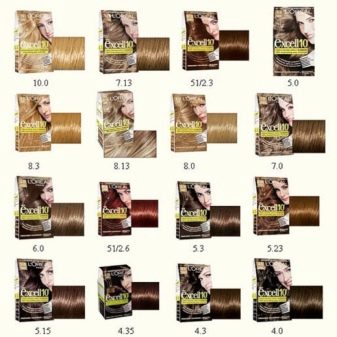
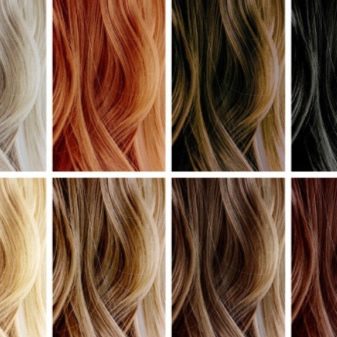
Pallet paints are also in great demand. Consider an example with the participation in the labeling of letters RFE3 - eggplant:
- R is red;
- F is purple;
- E is beige;
- 3 - dark chestnut row.
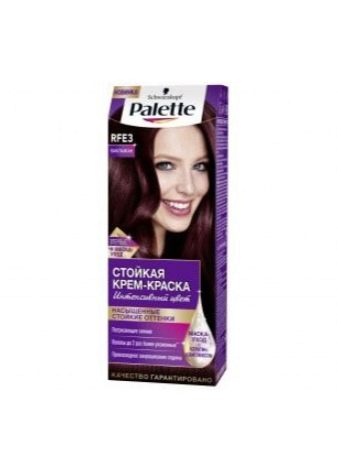
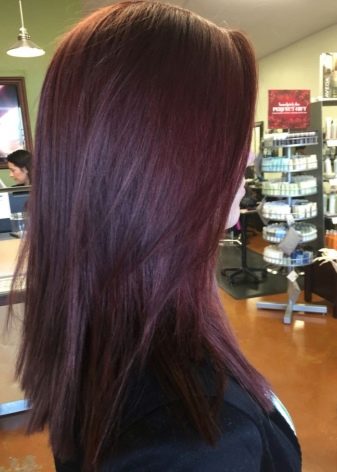
Selection rules
First of all, you need to decide what exactly you are waiting for: cardinal or short-term changes. If you want to change your hairstyle for a long time, you should choose chemical dyes. They will provide rich color and firmness, but also do not forget about the negative effects on both hair and scalp (dryness is the main problem). But this problem can be easily solved with proper care, from time to time making masks or using special serums and balms.
Physical formulations (tinting, tinting) provide an opportunity for color selection and allow experimentation, due to shallow penetration they prevent damage to the scalp and scalp. When choosing this composition, you can slightly change and give the hair an unusual appearance.
If you settled on natural dyes, then they will not only allow you to change the color of your hair, but also become a means to care for your curls. The disadvantages of these dye formulations include a wide selection of colors and fragility, that is, after several procedures for washing the hair, the hair loses its acquired saturated color. These include primarily henna and basma. Also, women often use tinctures from chamomiles, onion husks, sage, lemon, or combinations thereof as natural dyes.
If you do not want to change anything in yourself, but you just need to hide the gray hair that has appeared on some hair, then only products containing ammonia are suitable for painting. To select the desired shade, it is necessary to take into account the amount of gray hair (undoubtedly, in a percentage ratio):
- if gray hair on dark hair is less than half, then tones with marking up to the seventh (light blond) with an oxidizing agent concentration of 6% will do;
- if more than half gray, it is recommended to use tones up to the fifth in cold colors with a concentration of 6–9%;
- completely gray or only less than 20% dark, it is better to use light tones from the seventh, since gray hair can more effectively be masked by means with a high content of oxidizer.
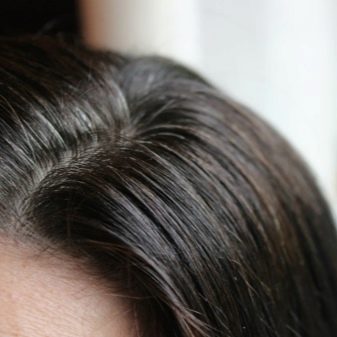
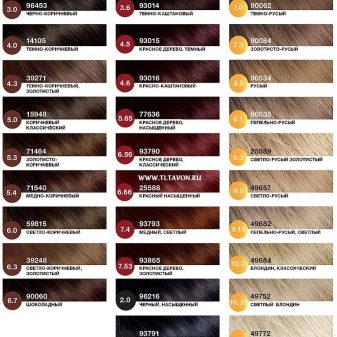
Tips
First of all, for reliability and obtaining the desired result, contact qualified hairdressers. The choice of the master is very important, since the further appearance will depend on this. Be prepared for the fact that the services of an impeccable master hairdresser will cost you quite a lot, but the costs will be worth it, because choosing the right specialist will ensure high-quality work, an elegant hairstyle and a good mood.
The second is the choice of paint. It all depends on the desired result: for a dramatic change or painting gray hair should be chosen from chemical dyes; if minor changes are needed, such as highlighting or adding shine to curls, use coloring agents in the form of tinting shampoos or balms.
When choosing staining with chemicals do not abuse the frequency of their application: such paints can be used no more than once every two weeks. Otherwise, the curls can be seriously injured.
Third is choosing the right tone. Pay attention to the fact that each shade has its own specific marking.
The information contained in it will facilitate the selection of the optimal shade for you.
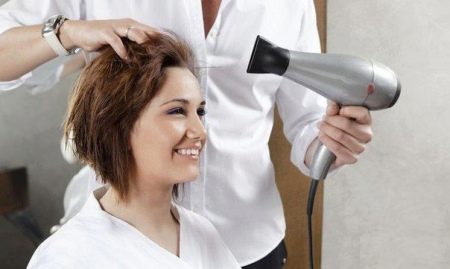
The final color is greatly influenced by the initial color of your hair. In addition, if there is already some coloring agent on the curls, then be prepared for an unpredictable result. This applies to natural dyes, especially henna and basma. When using dark shades, there will not be any special problems, and if you plan to lighten your hair, then get ready for the fact that at one time it will not work.
To once again verify the correctness of the selected shade and eliminate adverse results, test:
- take a small lock of hair in the ear area and apply paint on it;
- stand half of the time indicated on the package;
- rinse and dry the lock well;
- take an ordinary sheet of white paper and, laying a strand on it, in daylight, consider the resulting color: if this suits you, you can dye the remaining hair.
Do not forget that it is better not to sit a couple of minutes than to sit out and injure your hair.
Fifth - do not neglect your own health. Staining is not recommended if there are wounds, scratches and other injuries on the head.
About what the numbers on hair dye mean, see the following video:
